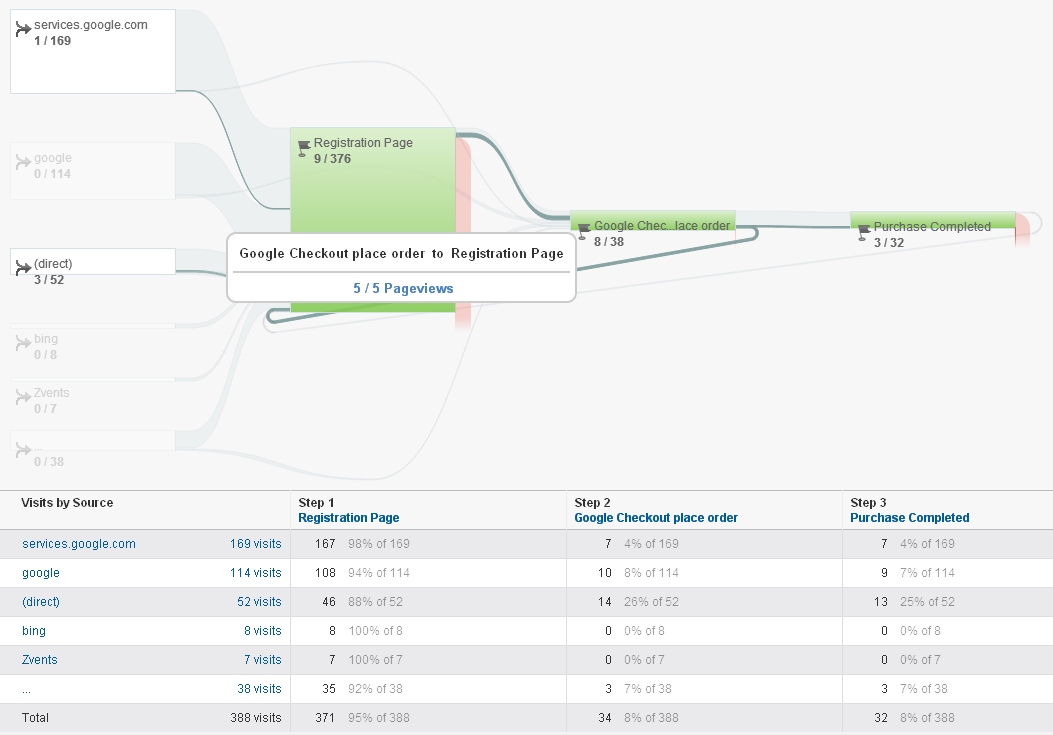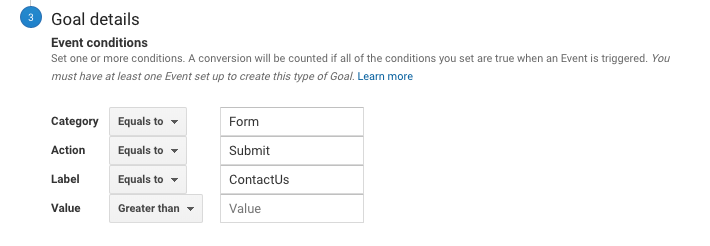Comprehensive Checklist of What Data Is Google Analytics Goals Unable to Track
Comprehensive Checklist of What Data Is Google Analytics Goals Unable to Track
Blog Article
Discover the Limitations of Google Analytics Goals: Revealing the Information Types That Remain Untrackable
As businesses increasingly count on data-driven decision-making, understanding the constraints of tools like Google Analytics comes to be vital. While Google Analytics Goals offer valuable insights right into individual communications, there exist data types that avoid monitoring, positioning challenges to a thorough understanding of customer behavior. These untrackable information kinds question regarding the accuracy and efficiency of the analytics information that companies heavily depend upon for their electronic strategies. Curious to discover the surprise unseen areas in your data evaluation procedure?
Insufficient Customer Trip Tracking
Incomplete customer trip monitoring within Google Analytics can prevent the capacity to properly assess customer actions. When the customer journey is not fully tracked, there are gaps in the data that protect against a detailed understanding of exactly how individuals engage with an internet site. This absence of understanding can cause missed chances for optimization and enhancements to the individual experience.
One usual problem with incomplete user trip monitoring is the failure to see the full path that customers take in the past finishing a goal or leaving the site. Without this details, it is challenging to identify where customers might be coming across challenges or friction factors that avoid them from transforming. Furthermore, incomplete monitoring can obscure the impact of particular advertising and marketing initiatives or site modifications on user actions.
To resolve this restriction, it is essential to establish correct tracking mechanisms within Google Analytics to record the whole user trip. This might involve establishing up occasion tracking, objective funnels, or utilizing devices like Google Tag Manager to ensure that no vital interactions go unrecorded. By gaining a thorough view of the customer journey, internet site owners can make even more educated choices to enhance customer engagement and drive conversions.
Attribution Obstacles
Navigating via attribution difficulties in Google Analytics calls for a detailed understanding of exactly how various touchpoints add to the general conversion process. Attribution obstacles arise from the intricacy of modern-day customer journeys, where individuals interact with numerous channels before transforming. Google Analytics provides numerous attribution models like initial touch, last touch, and linear, each supplying a different perspective on how credit is assigned to touchpoints along the conversion path. These designs might not constantly properly mirror the true impact of each touchpoint on the conversion.
One typical attribution difficulty is the problem in associating conversions to the appropriate resource, specifically in instances where users communicate with several channels before converting. This can lead to inaccuracies in identifying which advertising initiatives are driving the most conversions. Furthermore, cross-device tracking positions an additional attribution difficulty, as customers commonly switch over in between gadgets throughout their trip, making it testing to track their communications flawlessly. Marketing experts have to carefully analyze and analyze attribution information to make educated decisions and maximize their advertising and marketing approaches properly.
Offline Conversions
Given the difficulties connected with connecting conversions precisely in online networks, the measurement of offline conversions presents a substantial chance for online marketers looking for a much more extensive understanding of their clients' trip. Offline conversions describe activities that clients absorb the physical world, such as making acquisitions in brick-and-mortar stores or over the phone, attending events, or involving with published products - what data is google analytics goals unable to track. These conversions are vital for companies that run both online and offline, as my site they supply beneficial understandings right into the performance of advertising projects throughout various touchpoints
Tracking offline conversions generally posed a considerable obstacle for marketing experts, as it was challenging to connect these actions back to certain online interactions accurately. With advancements in technology, such as the integration of CRM systems, distinct identifiers, and discount coupon codes, organizations can now bridge the gap in between online and offline information to acquire a much more all natural sight of customer actions. By effectively measuring offline conversions, marketing professionals can optimize their techniques, designate sources a lot more efficiently, and inevitably improve the general customer experience.
Cross-Device Tracking
Cross-device tracking plays a crucial duty in comprehending the interconnected nature of consumers' electronic communications across multiple gadgets. In today's omnichannel world, where customers flawlessly change between desktop computers, smartphones, and tablet computers, tracking their habits throughout these devices is essential for marketers to get a comprehensive sight of their customer you can look here trip.

Moreover, personal privacy problems and guidelines such as GDPR and CCPA have better complicated cross-device monitoring. With customers requiring even more control over their information and raised restrictions on tracking innovations, marketers need to locate privacy-compliant and innovative ways to link individual communications throughout tools.
Dynamic Web Content Engagement
Understanding user engagement with dynamic material is crucial in optimizing electronic marketing techniques for improved target market communication. Dynamic content describes website aspects that alter based upon customer actions, preferences, or various other elements, supplying an individualized experience. Nonetheless, tracking individual interactions with dynamic content postures difficulties for traditional analytics devices like Google Analytics.
While Google Analytics can track fundamental communications like clicks and web page views, it might have a hard time to catch even more nuanced engagements within dynamic content. what data is google analytics goals unable to track. Metrics such as time invested in certain vibrant elements, float actions, or communications within pop-ups are often not conveniently measurable making use of standard monitoring methods. This constraint impedes marketing professionals' ability to completely understand just how individuals are involving with dynamic web content and tailor their strategies appropriately

Conclusion
In conclusion, Google Analytics goals have limitations in tracking incomplete individual trips, attributing conversions properly, capturing offline conversions, tracking cross-device interactions, and measuring dynamic web content interaction. These constraints highlight the significance of exploring extra monitoring techniques and tools to acquire an extra detailed understanding of customer behavior and conversions past what Google Analytics can supply.
While Google Analytics Goals deal important insights into customer communications, there exist data kinds that thwart monitoring, positioning challenges to a comprehensive understanding of user habits.Insufficient individual journey monitoring within Google Analytics can hinder the capability to accurately analyze individual habits. When the customer journey is not fully tracked, there are spaces in the data that protect against a comprehensive understanding of just how users communicate with a site.One common issue with insufficient user journey monitoring is the lack of ability to see the full path that individuals take these details before completing an objective or leaving the website. By getting a comprehensive view of the customer trip, website proprietors can make even more enlightened decisions to boost user involvement and drive conversions.
Report this page